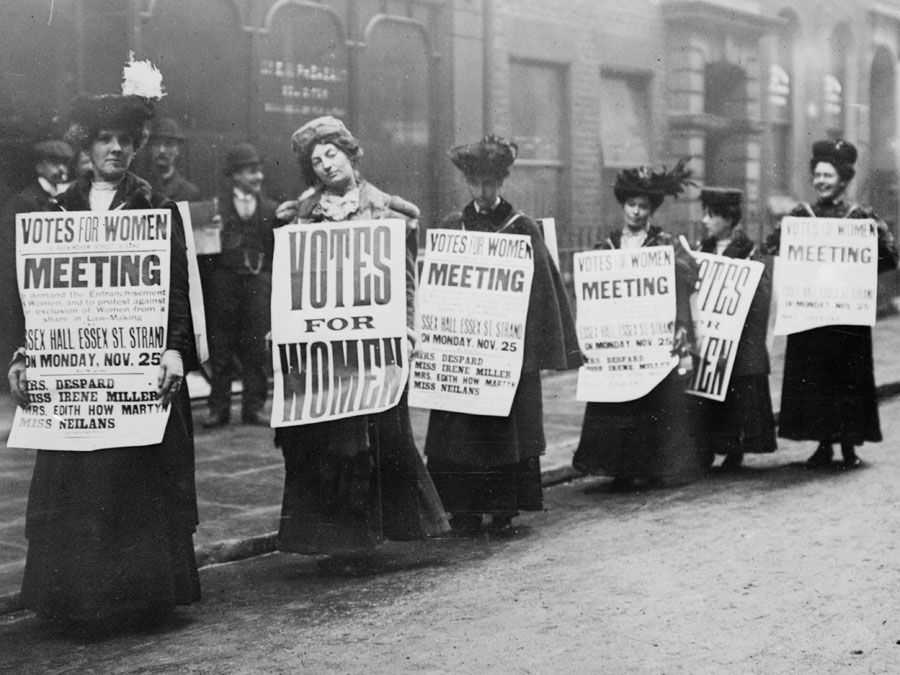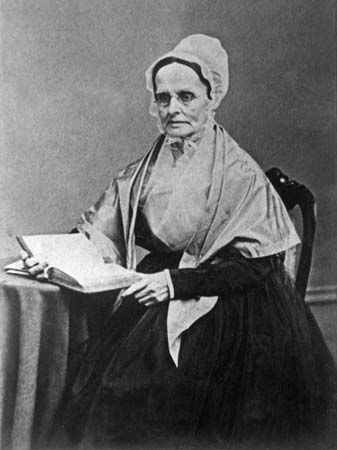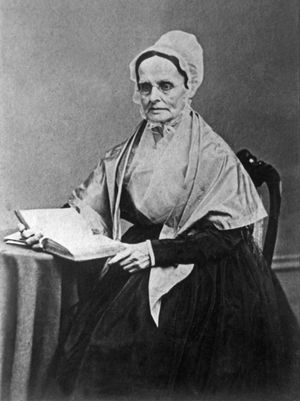Lucretia Mott
Our editors will review what you’ve submitted and determine whether to revise the article.
- Née:
- Lucretia Coffin
- Born:
- January 3, 1793, Nantucket, Massachusetts, U.S.
- Died:
- November 11, 1880, near Abington, Pennsylvania
- Also Known As:
- Lucretia Coffin
Lucretia Mott (born January 3, 1793, Nantucket, Massachusetts, U.S.—died November 11, 1880, near Abington, Pennsylvania) was a pioneer reformer who, with Elizabeth Cady Stanton, founded the organized women’s rights movement in the United States.
Lucretia Coffin grew up in Boston, where she attended public school for two years in accordance with her father’s wish that she become familiar with the workings of democratic principles. At age 13 she was sent to a Friends’ (i.e., Quaker) boarding school near Poughkeepsie, New York, where two years later she was engaged as an assistant and later as a teacher. It was then that her interest in women’s rights began. Solely because of her sex, she was paid only half the salary male teachers were receiving.
In 1811 she married James Mott, a fellow teacher from the school, and the couple moved to Philadelphia. About 1818 Lucretia Mott began to speak at religious meetings, and three years later she was accepted as a minister of the Friends. She joined the Hicksite (Liberal) branch of the Society of Friends when a rift occurred in the 1820s, and in that decade she began to travel about the country lecturing on religion and questions of social reform, including temperance, the abolition of slavery, and peace.

In 1833 Mott attended the founding convention of the American Anti-Slavery Society, and immediately thereafter she led in organizing its women’s auxiliary, the Philadelphia Female Anti-Slavery Society, of which she was chosen president. She met opposition within the Society of Friends when she spoke of abolition, and attempts were made to strip Mott of her ministry and membership. In 1837 she helped organize the Anti-Slavery Convention of American Women, and in May 1838 her home was almost attacked by a mob after the burning of Pennsylvania Hall, Philadelphia, where the convention had been meeting. Rebuffed as a delegate to the World’s Anti-Slavery Convention in London in 1840 because of her sex, Mott still managed to make her views known.
In 1848, taking up the cause of women’s rights, she and Elizabeth Cady Stanton called a convention at Seneca Falls, New York, the first of its kind, “to discuss the social, civil, and religious rights of women.” The convention issued a “Declaration of Sentiments” modeled on the Declaration of Independence; it stated that “all men and women are created equal.” From that time Mott devoted most of her attention to the women’s rights movement. She wrote articles (“Discourse on Woman” appeared in 1850), lectured widely, was elected president of the 1852 convention at Syracuse, New York, and attended almost every annual meeting thereafter. At the organizing meeting of the American Equal Rights Association in 1866, she was chosen president. The following year she joined Robert Dale Owen, Rabbi Isaac M. Wise, and others in the organization of the Free Religious Association.
A fluent, moving speaker, Mott retained her poise before the most hostile audiences. After the Civil War she worked to secure the franchise and educational opportunities for freedmen; since passage of the Fugitive Slave Law in 1850, she and her husband had also opened their home to runaway slaves escaping via the Underground Railroad. She continued to be active in the causes of women’s rights, peace, and liberal religion until her death. Her last address was given to the Friends’ annual meeting in May 1880.

















